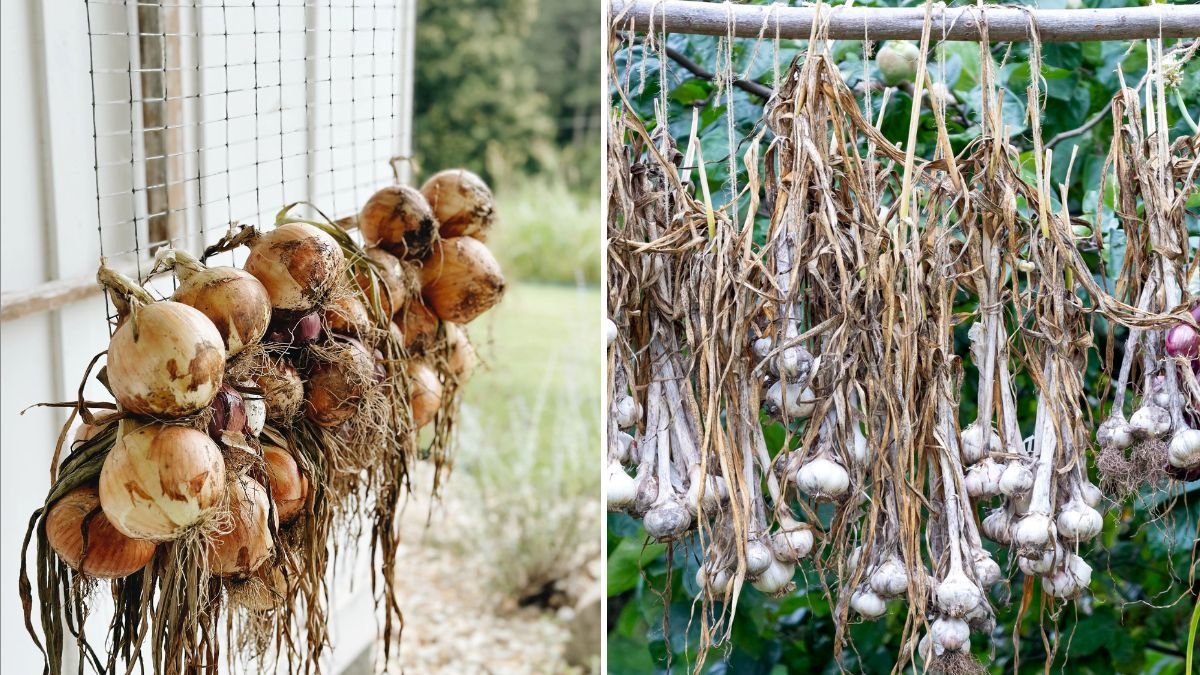Garlic and onions are kitchen staples known not only for their bold flavors but also for their impressive shelf lives when stored properly. Whether harvested from a home garden or purchased fresh, these alliums require special care to maintain their quality over time. A key step in this process is curing — a traditional practice that many gardeners and farmers swear by to extend storage life and preserve flavor.
But is curing really necessary? How does it impact storage? And what’s the best way to cure garlic and onions? In this article, we’ll explore why curing matters, the science behind it, methods for curing, and tips for successful storage that keeps your garlic and onions fresh and flavorful for months.
What is Curing?
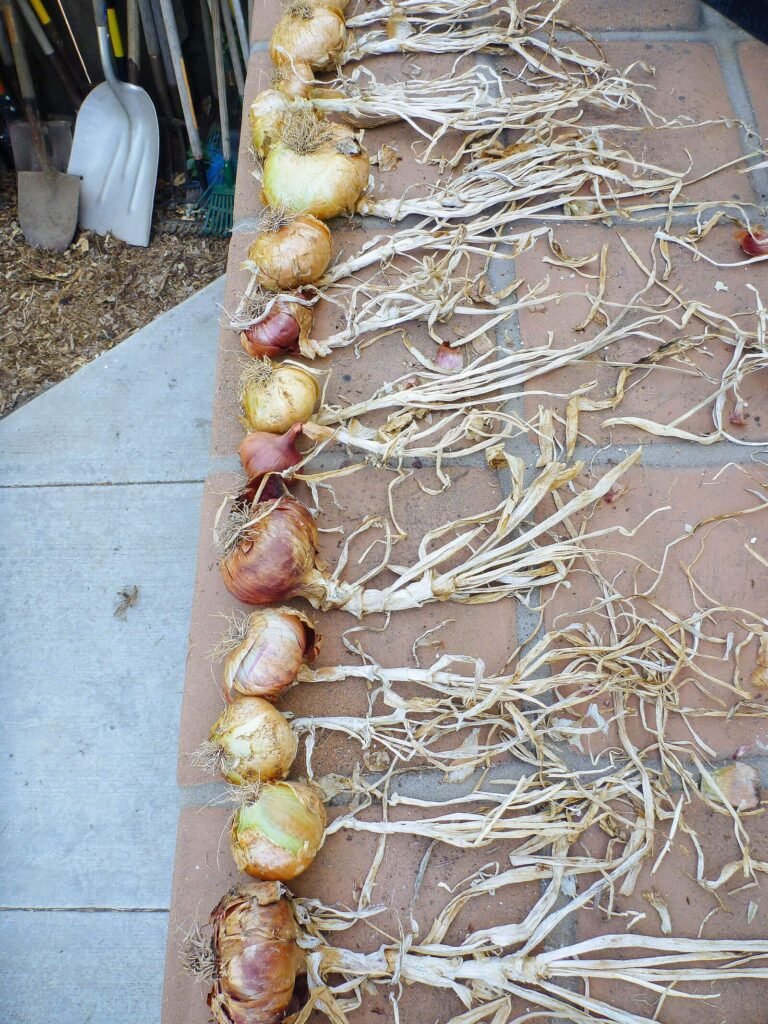
Curing is a drying process that involves removing excess moisture from freshly harvested garlic and onions while allowing their outer skins and necks to toughen and dry out. This process is essential because:
- Reduces moisture content: Prevents rot and mold during storage.
- Promotes the formation of protective outer skins: Helps prevent bacterial and fungal invasion.
- Heals minor cuts or bruises: Reduces the risk of spoilage by sealing wounds.
- Prepares the bulbs for long-term storage: Extends shelf life dramatically.
Without proper curing, garlic and onions can spoil quickly, shrivel, or sprout prematurely.
Why Is Curing Important for Garlic and Onions?
1. Moisture Control
Garlic and onions freshly pulled from the soil contain high moisture levels. If stored immediately without curing, this moisture encourages microbial growth, resulting in soft spots, mold, and decay.
2. Skin Toughening
Curing dries the outer layers of the bulb, turning them into papery skins that protect the inner cloves or layers. This natural armor is critical for maintaining freshness.
3. Reducing Sprouting
Proper curing slows down the sprouting process. If onions or garlic remain moist and warm after harvest, they can start to sprout, which depletes the bulb’s nutrients and flavor.
4. Flavor Development
In garlic, curing also enhances flavor. Some compounds develop more fully after curing, resulting in richer aroma and taste.
How to Cure Garlic and Onions
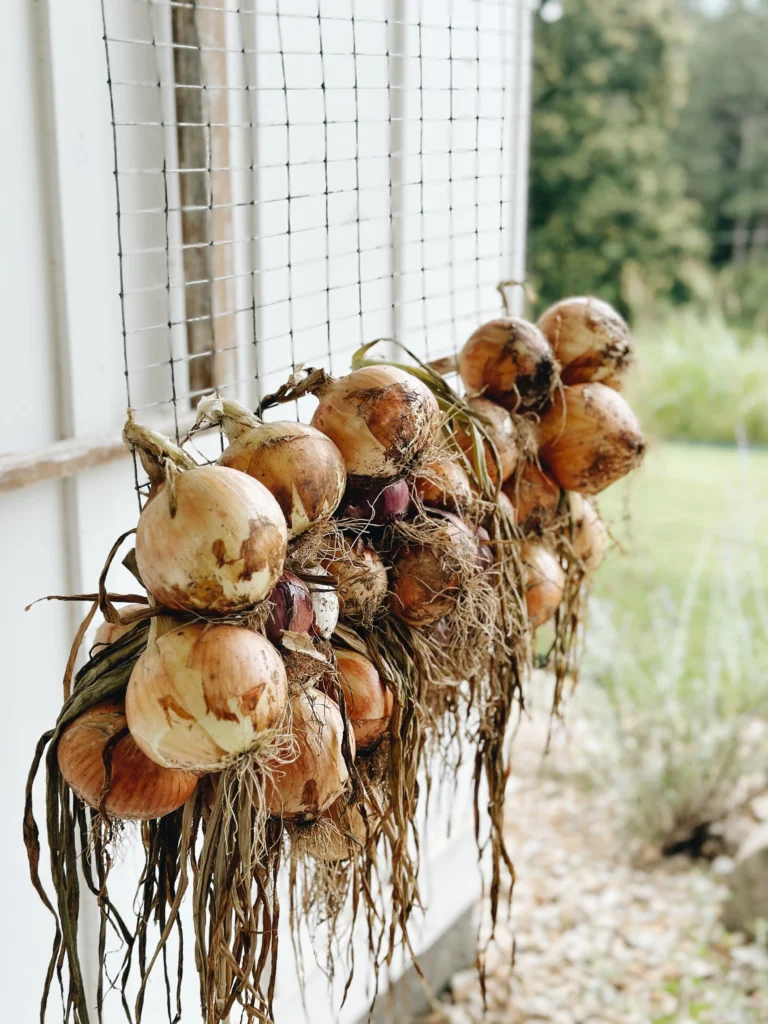
Timing
- When to start: Begin curing immediately after harvesting once the soil has been gently brushed off (do not wash).
- Duration: Typically, curing takes 2 to 4 weeks, depending on environmental conditions.
Ideal Conditions for Curing
- Temperature: Between 75°F and 85°F (24°C to 29°C)
- Humidity: Low humidity, around 60% or less
- Air circulation: Good ventilation to allow moisture to evaporate
- Shade: Avoid direct sunlight, which can cause overheating and sunscald
Methods for Curing
1. Hanging in Bunches
- Tie garlic or onions in small bundles (3-6 bulbs).
- Hang them in a dry, airy, shaded place such as a garage, shed, or porch.
- Leave ample space between bundles for airflow.
2. Spreading on Racks or Screens
- Lay bulbs out in a single layer on wire racks, mesh screens, or slatted crates.
- Turn bulbs every few days to ensure even drying.
- Place racks in a well-ventilated area away from sunlight.
3. Using Curing Trays or Boxes
- Specialized boxes or trays with perforations for airflow can be used indoors.
- Keep them in a dry, warm, and ventilated spot.
Signs That Garlic and Onions Are Properly Cured
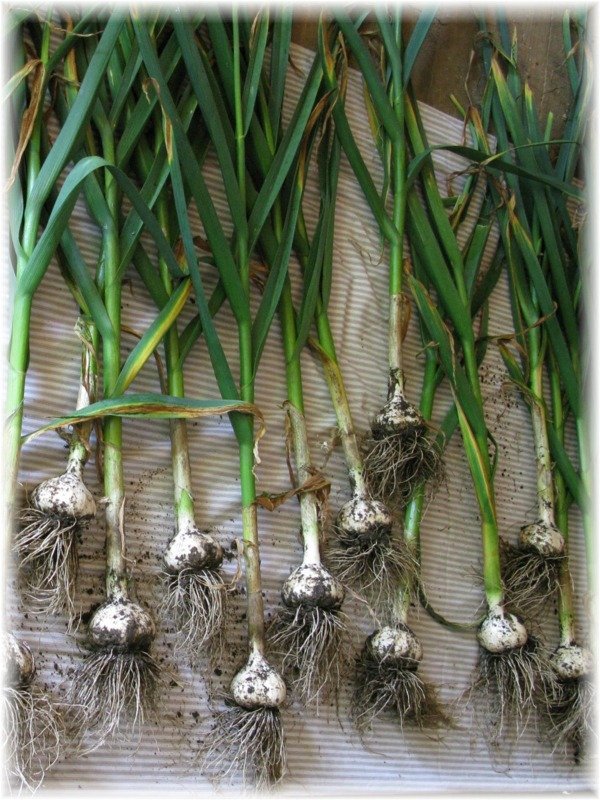
- Necks are dry and tight: The area where stems meet the bulb feels completely dry and firm.
- Outer skins are papery: The skin peels easily and is thin but intact.
- Bulbs feel firm: No soft spots or signs of rot.
- Roots are dry and brittle: Root ends will feel dry rather than moist.
What Happens If You Don’t Cure Garlic and Onions?
Storing freshly harvested, uncured alliums typically results in:
- Rapid spoilage: Moisture encourages mold and bacterial growth.
- Sprouting: Premature sprouting wastes flavor and texture.
- Shortened shelf life: You might only get a few weeks instead of months.
- Loss of flavor: Wet bulbs can become bland or bitter.
For best results, curing is strongly recommended especially if you want to store garlic and onions for longer than a couple of weeks.
Storing Cured Garlic and Onions
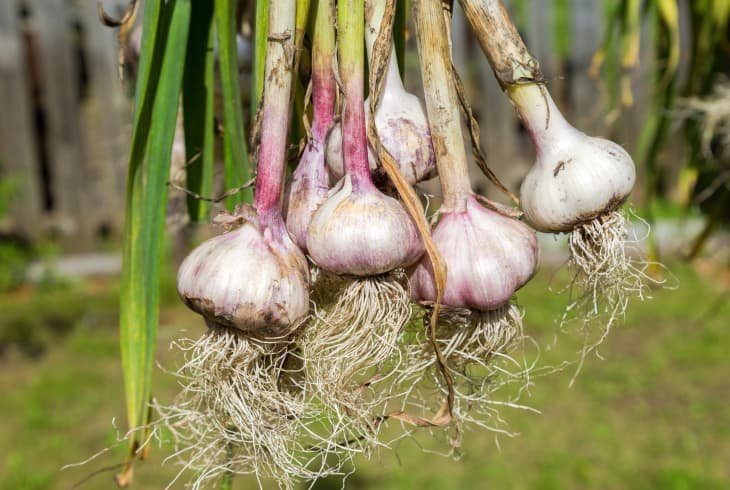
Once cured, proper storage will maintain quality and freshness.
Storage Conditions
- Temperature: Cool, ideally between 32°F and 50°F (0°C to 10°C).
- Humidity: Moderate humidity (60-70%) to prevent drying out or shriveling.
- Darkness: Keep bulbs in a dark place to prevent sprouting.
- Airflow: Store in mesh bags, baskets, or ventilated bins, avoiding plastic bags that trap moisture.
Where to Store
- Basements, root cellars, or cool pantries are ideal.
- Avoid refrigerators for onions (unless peeled or cut) as the cold and moisture can cause spoilage.
- Garlic can be refrigerated if peeled, but whole bulbs do better in cooler, dry places.
Special Considerations for Different Types
Garlic
- Hardneck varieties tend to cure more quickly and store for shorter periods.
- Softneck varieties store longer and are ideal for extended storage.
- After curing, garlic can also be braided and hung for easy storage.
Onions
- Sweet onions with higher moisture content don’t store as long and need more careful curing.
- Storage onions (like yellow or red onions) cure well and can last for several months if stored properly.
Additional Tips to Maximize Storage Life
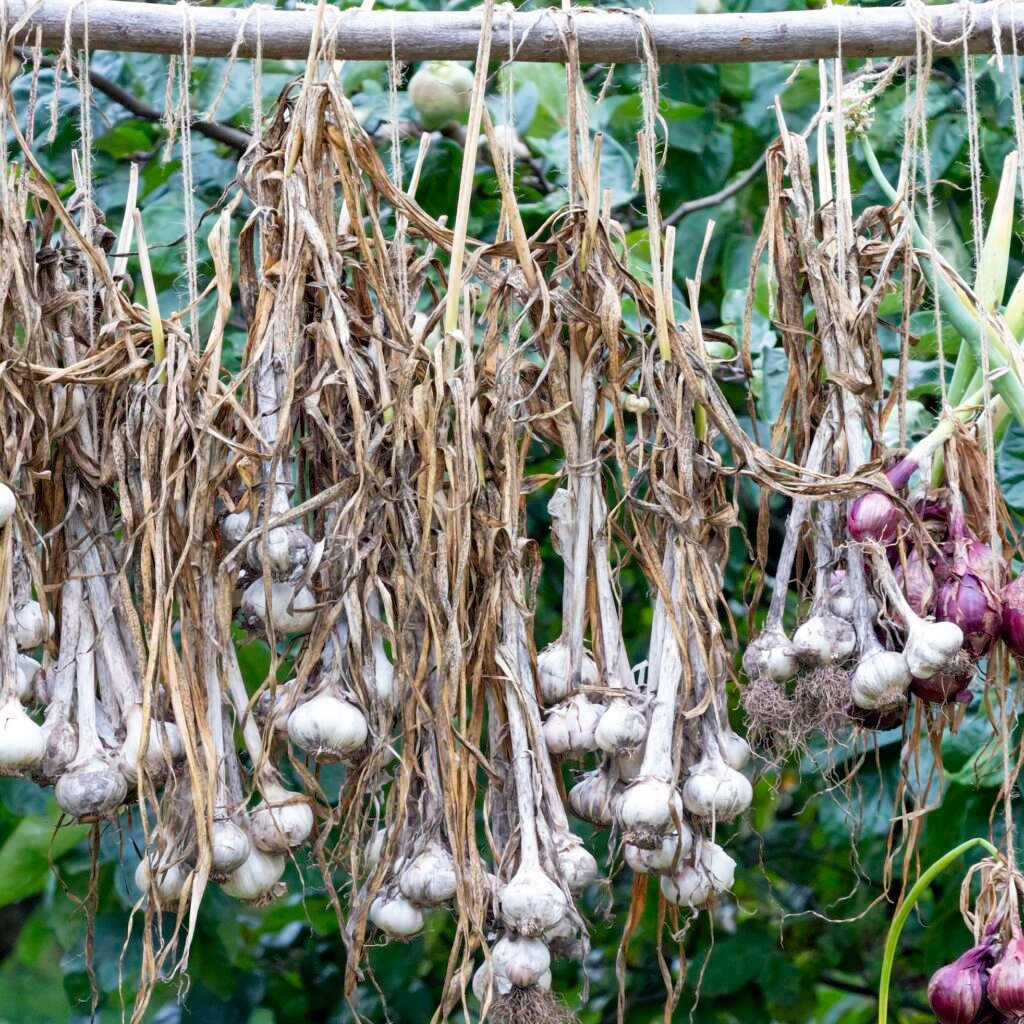
- Handle bulbs carefully during harvest: Bruising and cuts speed up spoilage.
- Remove dirt gently: Do not wash bulbs before curing as moisture encourages rot.
- Inspect regularly: Remove any soft or sprouting bulbs to protect others.
- Avoid storing near potatoes: Potatoes emit moisture and gases that reduce onion and garlic shelf life.
Conclusion: Is Curing Worth It?
The simple answer is yes — curing garlic and onions before storage is essential to maximizing their shelf life, flavor, and quality. This traditional practice removes excess moisture, toughens protective skins, and prevents premature sprouting, which together protect your bulbs from decay and spoilage.
For gardeners and commercial growers alike, curing is a low-effort, high-reward step that transforms freshly harvested garlic and onions into long-lasting pantry staples. Whether you cure by hanging, spreading on racks, or using specialized containers, the key is warm, dry, ventilated conditions for several weeks.
